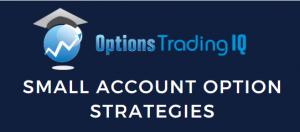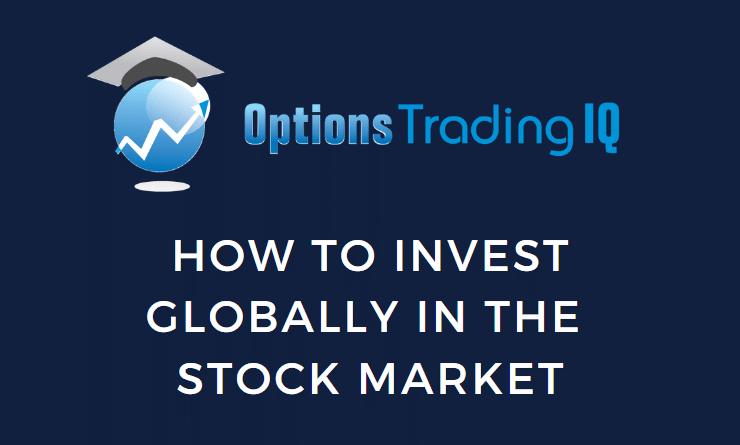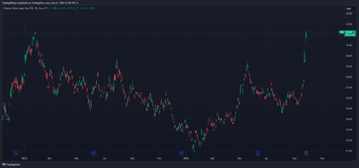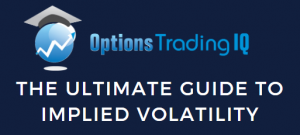

Global investment can give you access to different opportunities and the potential for higher returns.
This type of investing used to be reserved for those with large sums of money.
They would need to have cash on all the exchanges they want to trade on.
With all of the modern technology employed in the markets, you can do almost all of that from a single machine, and with the advent of international ETFs, you no longer have substantial capital requirements.
Below, we will look at what goes into global investing and how to do it from the comfort of your trading computer with all the liquidity and security of the U.S. stock exchanges.
Contents
Understanding Global Markets
Understanding global markets is crucial for any investor looking to diversify their portfolio and tap into unique growth opportunities outside the U.S. markets.
These opportunities can help add exposure to various manufacturing hubs like China and India and mineral hubs like Africa and South America.
Before looking at individual places, let’s better understand what global markets are and how they are categorized.

Non-US markets are typically categorized into developed, emerging, and frontier markets.
Developed markets tend to be more stable, think the U.S. or E.U., while emerging markets can be potentially more volatile but offer greater potential returns.
Frontier markets are often the most volatile and politically unstable but offer some of the largest returns.
One reason to look outside the U.S. market is to increase the return on investment, but another is to simply diversify your exposure to the world economy.
The U.S. represents less than 5% of the global stock market, so looking at international market exposure makes sense from a diversification perspective.
If this is something that you are looking to do, it would make sense to look at “local” companies for whatever region you are investing in, as many U.S. companies only have a small consumer base outside of the U.S.
A few other things to remember when investing in international markets are the political structure of the location, the currency it uses, and how strong its banking system is.
You can select the best ETF or stock on the planet from a fundamentals perspective.
Still, if a currency collapse happens or extreme political instability occurs, it can have a depressive effect on the whole region, including your company.
Researching International Stocks
So now that we have a basic understanding of the global markets and why you would want to invest in them, let’s look at how to research markets worldwide.
First, you must decide if you want to look at individual companies or groups in the form of ETFs.
If you go the individual company route, there are a few ways to do it.
The first is to look at American companies with international exposure.
Apple (AAPL) and Coca-Cola (K.O.) are two large ones that come to mind.
Both of them have large user bases outside of the domestic market.
The next route you could take is looking at American Depositary Receipts (ADRs).
These are traded in the U.S. markets the same way a regular U.S. stock would, but the difference is that this is basically a passthrough instrument.
An ADR is a security issued by a bank or broker in the U.S. markets and has an equivalent share of a foreign company on that company’s home stock exchange.
While this may sound complicated, it is there to simplify international investing for U.S. citizens.
Using ADRs keeps all your capital on U.S. soil and simplifies the tax reporting process.
Odds, you have traded an ADR and have not even realized it.
Many names, such as Alibaba (BABA) and Taiwan Semiconductor (TSM), are ADRs but trade like regular common stock.
The last route to take would be to use Exchange Traded Funds (ETFs) to purchase into a basket of international stocks.
Common ETFs for international exposure are looked at in greater detail below.
Now that you have decided how to invest, the next step is to assess the investment vehicle.
Unless otherwise noted, the following largely only apply if you invest in U.S. companies or ADRs.
First, you must assess the financial health of these companies by running through a standard fundamental analysis of them.
Looking at financial statements, potential product lines, company moats, and news releases about potential product expansion.
Another potential way to look for solid international companies is by looking at how some active ETFs and Mutual funds are investing.
In addition to the fundamental analysis of the company, it’s also important to look at geopolitical factors.
Such as how friendly the government is to outside investment and/or local business.
How do the economic indicators look as a whole?
If the location’s GDP increases or decreases, how much do the central banks have to intervene?
All of these things are freely available online, and you can tell a story when you look at them month over month.
China, India, and Other Emerging Markets
Stocks and ETFs to Invest in China
Investing in Chinese companies and ETFs can provide an opportunity to tap into one of the largest populations on the planet and one of the biggest manufacturing bases in the world.
American Depository Receipts (ADRs) like Alibaba (BABA) and Baidu (BIDU) offer exposure to leading Chinese tech firms on U.S. exchanges under SEC regulations.
Consider ETFs like the iShares China Large-Cap ETF (FXI) and Xtrackers Harvest CSI 300 China A-Shares ETF (ASHR) for broader market exposure.
China’s stock market, the second-largest globally, presents potential growth opportunities in sectors like technology, consumer goods, and renewable energy.
China historically has also been a strong spender on construction and building.

Some risks that exist in China are potential geopolitical conflict and the accuracy of reported economic data.
Stocks And ETFs To Invest In India
India’s stock market offers a variety of investment opportunities, particularly through ADRs like Infosys and Tata Motors, which simplify the process of trading Indian shares on U.S. exchanges.
ETFs like the iShares MSCI India ETF (INDA) offer a more diversified approach to large and midcap Indian companies.
Like China, India has a massive population and is pivoting to entice more and more manufacturing.
The Indian stock market has grown significantly recently, with the Nifty 50 Index averaging over 11% annual returns in the past 15 years.
Additionally, foreign investment has increased both in the Indian stock market and local infrastructure.
India has slightly different concerns than China, with currency fluctuations and governmental oversight being the primary concerns.
Emerging Markets
Many other emerging and frontier markets are available to investors outside India and China.
South America is also a common place for investor funds, with Brazil (EWZ), Mexico (EWW), and Latin American 40 (ILF) ETFs all having healthy assets under management and strong daily volumes.
In Africa, investors can find exposure to emerging markets for potential outsized returns. iShares MSCI South Africa ETF (EZA) is probably the most popular.
ETFs vs Individual Stocks For Global Exposure
When considering international exposure in your investment strategy, you’ll probably weigh the benefits of market ETFs versus buying into individual names.
Is one better than the other?
Like domestic markets, ETFs offer instant diversification and can help spread company-specific risk across a large basket of stocks/ADRs.
In the context of international investment, ETFs also provide passive access to people who know what to look for in the markets through fund managers and investment analysts.
While you may never meet them, they are hired by the funds holding the stocks.
On a larger scale, you may also access an entire part of the world through a single ETF, like the Latin American 40, which invests in several different locales.
These types of ETFs also help to mitigate currency risks.
The downside of ETFs is that it’s tough to participate in any individual name that runs; this is the benefit of owning individual names.
Stocks like Alibaba (BABA) and Tata Motors (TTM) can go on huge runs, and the only way to capture that return is through exposure to the stock.
Ultimately, the choice between ETFs and individual stocks depends on your risk tolerance, research capability, and investment goals.
Balancing both in your portfolio is more than likely the best way to go with it.
Conclusion
International investing opens the door to a wide range of opportunities, allowing you to diversify your portfolio and tap into high-growth markets outside the U.S.
With options like ETFs and ADRs, it’s easier than ever to gain exposure to regions like China’s tech sector or India’s booming manufacturing base, without the need for complicated international setups.
Balancing individual stocks and ETFs allows you to capture both the growth potential of specific companies and the stability that comes with diversified funds.
When done right, global markets can be a strong addition to your investment strategy.
We hope you enjoyed this article on how to invest globally in the stock market.
If you have any questions, please send an email or leave a comment below.
Trade safe!
Disclaimer: The information above is for educational purposes only and should not be treated as investment advice. The strategy presented would not be suitable for investors who are not familiar with exchange traded options. Any readers interested in this strategy should do their own research and seek advice from a licensed financial adviser.










